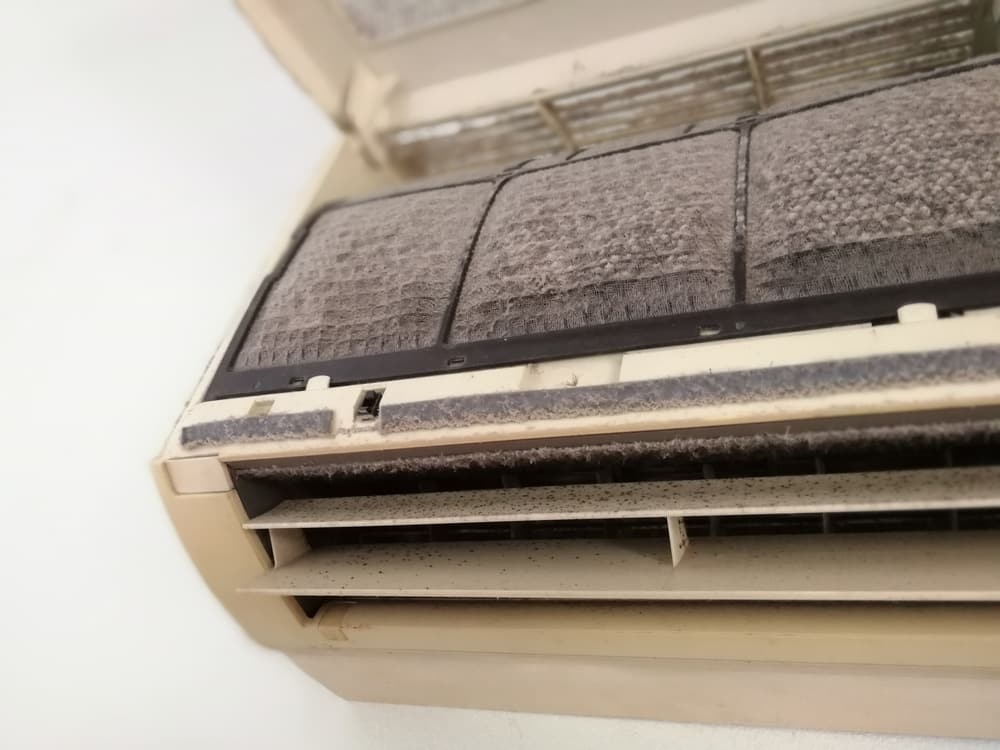
Mold gets in your air conditioner usually during the winter and spring, when your AC unit isn’t used as much. It grows when the weather gets a little warmer: warm enough for mold growth, but not so warm that you want to use your AC.
You can tell that mold is in your air conditioner if you turn it on and you get a musty smell from your vents. This is the telltale sign. You could have mold growing in other places, too, but if it’s connected to cold air blowing through your vents, then you know the mold is growing in your AC unit.
How Prevent Mold From Growing In Your Air Conditioner
Run Your AC
Mold thrives in damp, humid spaces. A little known fact about air conditioners is that they were designed to dehumidify rooms. So, while those showers may bring cool breezes, don’t let them entice you into leaving your windows open. This allows the humidity (and opportunity for leaks) to skyrocket.

Maintain the drain pans
If the drain pans are not sloped and cleaned regularly, standing water won’t be able to drain through the deep seal trap and will accumulate in the drain pans. The water and microbes in the drain pans will result in mold growth.
Inspect Your Air Conditioner System For Moisture
Mold needs moisture to grow, and if there is any moisture present in your HVAC system, it may be causing mold growth that makes its way to your AC unit.
Check the furnace, the AC unit, and the ducts for any moisture that may be present. Moreover, if there’s moisture, you may have an issue with your home’s humidity or a problem with your HVAC system. Get an HVAC professional to check it out for you.

Airflow and Ventilation
Mold loves stale air. By making sure that all of the corners and crevices in your home or office have proper airflow and ventilation, you can prevent its growth. You can do this by leaving space between bigger furniture. Exterior walls and running the exhaust fans in your kitchen, bathrooms and laundry rooms.
Check the Air Conditioner Intakes
Air intakes that are near areas where organic materials accumulate will transport microbes and contaminants into your HVAC system. In addition, make sure to keep the areas below air intakes clean by moving dumpsters. And removing standing water and bird droppings, etc.



No comment